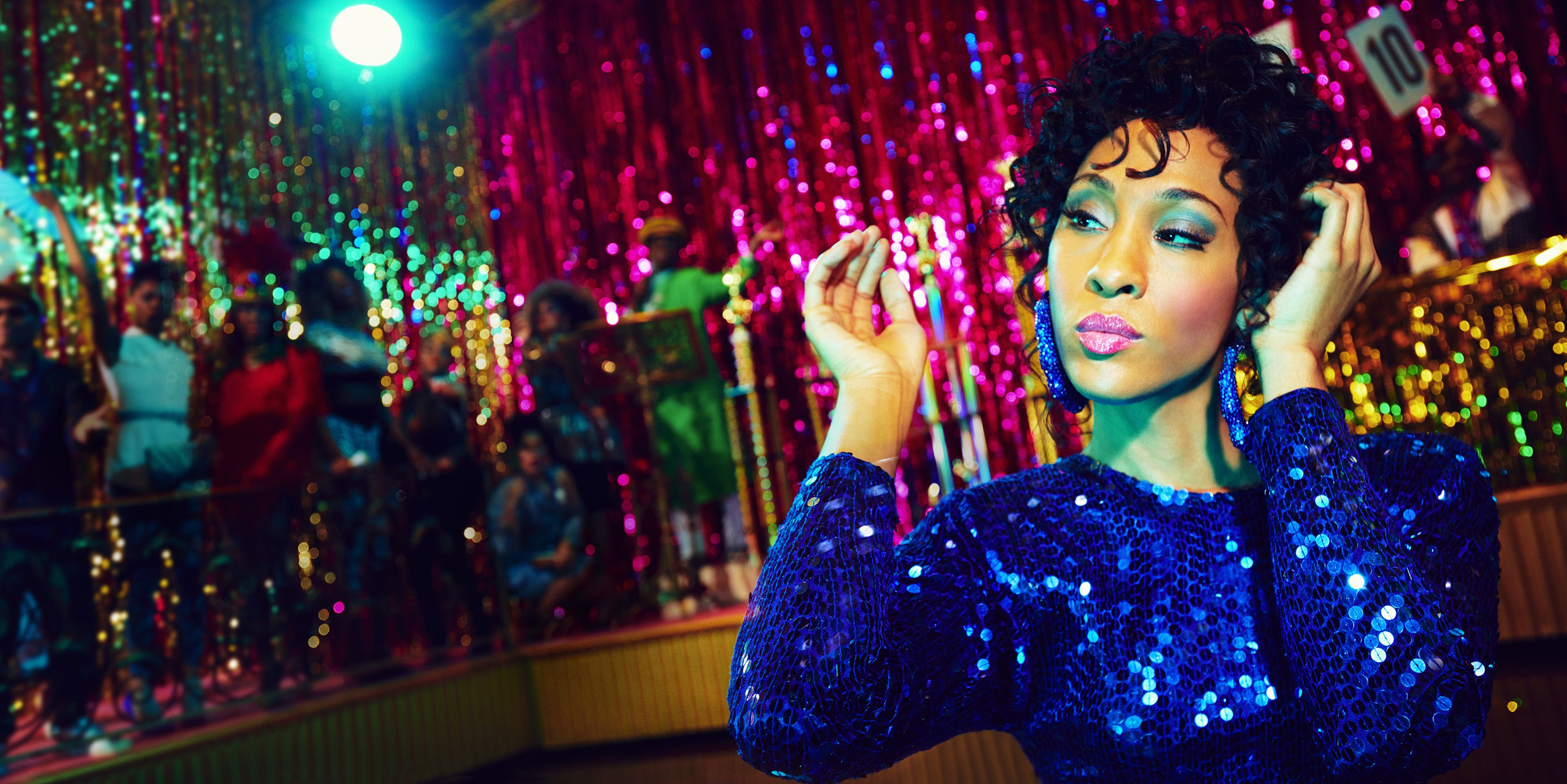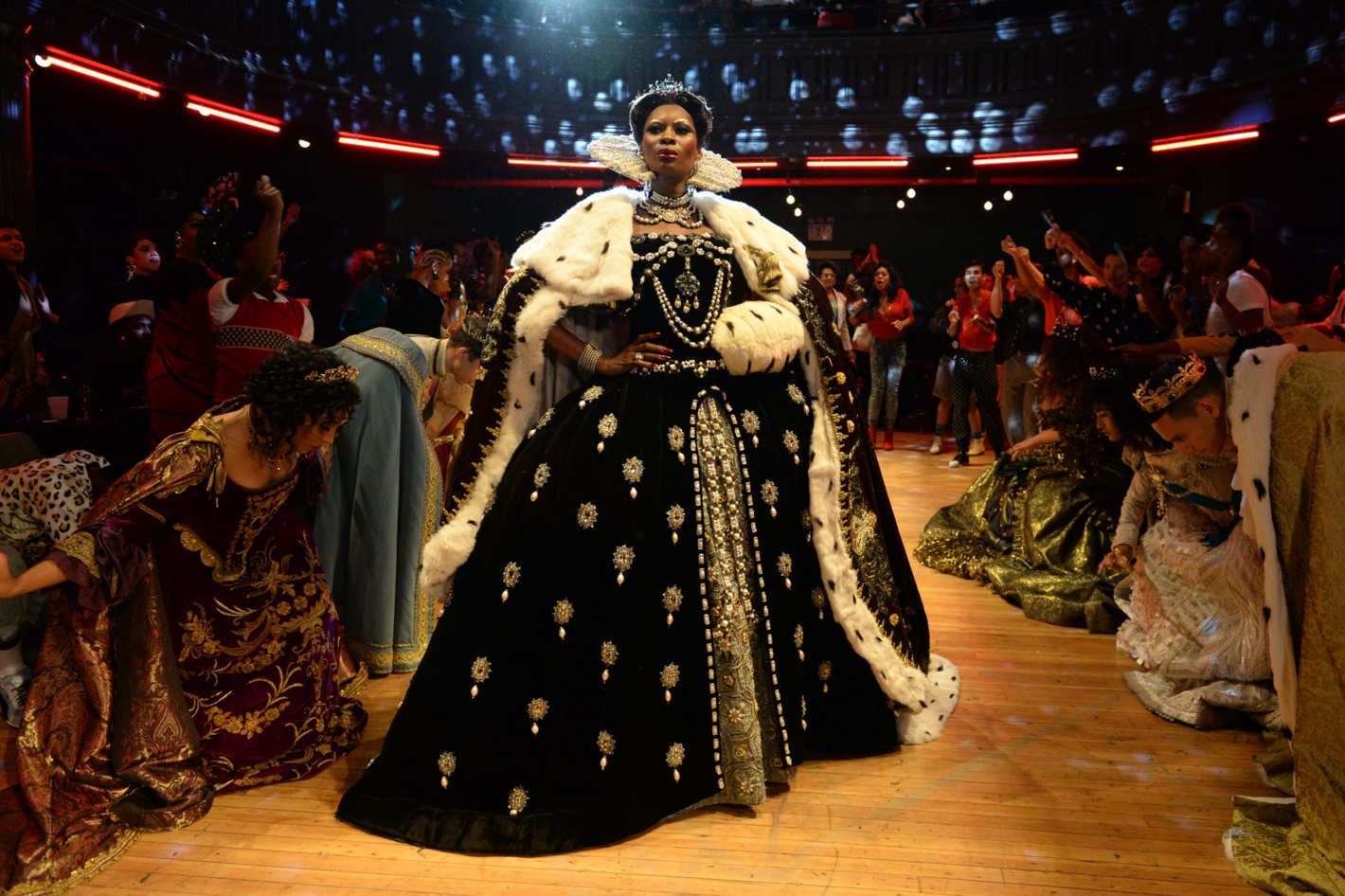The Realness of ‘Pose’

The FX series Pose premiered in June 2018 to rave reviews for its historic depiction of the New York City house and ballroom scene of the late 1980s. With five Black and Blatinx transfemme actors holding series regular roles playing trans characters, Pose sets a new record for racial trans visibility on television. More significantly, the characters of Pose are complex and the sincerity of their on-screen relations has struck a chord with many queer Black and brown viewers.
The show joins a growing number of commodified media depicting aspects of house/ballroom culture. These include the 1990 documentary Paris Is Burning, Madonna’s 1990 music video for “Vogue,” RuPaul’s Drag Race franchise (2009–), the feature-length documentary Kiki (2016), and the 2018 VICELAND series My House. When discussing the social life of this genre of media, the conversation often takes up questions of representation. This essay, too, deals with the problem of representation though obliquely, by stepping outside the representational mode of analysis in order to position alternative ways of thinking about the potential of television to effect social justice and hasten liberation.
The word representation refers both to the idea of “speaking for or on behalf of another” in a political register, and as re-presentation in an aesthetic or philosophical register. The latter refers to staging and signification/semiotics when a representation intends to point towards some aspect of “reality” out in the world. To the extent that Pose stages the house/ball scene of 1987 NYC, the show’s representation is intended as a visual-audio sign that indexes that actual historic-material world. To the extent that Pose speaks on behalf of these queer forms of showing up and moving through the world, making them legible to viewers as political subjects, Pose gives representation to Black and Blatinx trans femmes. Even the very name of the series is tangled in this web of meaning. While the idea of posing can refer to assuming an identity and falsely representing to speak as or on someone’s behalf, one also poses by re-presenting their body in an arrangement that follows the pattern of an image already in circulation.
Expecting a television show to do the cultural-political work of trans representation when representative electoral politics fail is a tall order for viewers and show creators alike. It also asks us to (re)consider what work the medium of a television show is capable of accomplishing in the first place. In The Witch’s Flight, Kara Keeling cautions against approaching cinematic media through a framework of positive, negative, or accurate representations, owing to a history in which the optics of the white gaze have deliberately distorted the relationship between image and reality for Black and brown people. Instead, she turns to thinking of cinematic media as an integral part of our social reality, not a mere reflection or representation of it, and she holds up the Black femme as a critical figure that marks the limit of society’s “common sense,” or the range of what is thought of as normal and expectable, as well as our ability to imagine alternative social arrangements and reoriented ethical practices.
The Black femme culture centered by Pose is not new. Queer NYC ballroom culture is at least one hundred years old, as documented by Eric Garber. Langston Hughes captured the scene in his autobiography The Big Sea:
Strangest and gaudiest of all Harlem spectacles in the ’20s, and still the strangest and gaudiest, is the annual Hamilton Club Lodge Ball . . . . It is the ball where men dress as women and women dress as men . . . . It was fashionable . . . to . . . look . . . at the queerly assorted throng on the dancing floor, males in flowing gowns and feathered headdresses and females in tuxedos and box-back suits . . . . Prizes are given to the most-gorgeously gowned . . . who, powdered, wigged, and rouged, mingle and compete for the awards . . . given by . . . former ‘queens’ of the ball, prize winners of years gone by, for this dance has been going on a long time.”
By the late 1960s and 1970s, the house scene emerged alongside balls. This was the result of specific socioeconomic and political context of post-civil rights movement and post-industrial New York City, when reduced social services and gentrification led to an increase in unemployment and homelessness among queer Black and Blatinx youth. This amplified under the Reagan years when the HIV/AIDS crisis swept through queer communities like scorched earth (and continues yet in Black/brown communities). In this atmosphere, vogue houses, the name given to teams who compete in the ball, emerged to provide the material resources of housing, food, and clothing within the bonds of fictive kinship. House members chose “mothers” and “fathers” to oversee daily life within the family as well as guide the performances for the ballroom competitions. Frank Leon Roberts reports that by 1980, Harlem boasted at least eight legendary houses: the House of Labeija (a Black/ Blatinx vernacular redeployment of the Spanish word belleza for “beauty”), the House of Corey, the House of Wong, the House of Dupree, the House of Christian, the House of Princess, and the House of Pendavis.

During a typical ball, drag competitors are judged across several categories like “fish,” “banjee,” or “masculine face” for the different looks (lewks in queer parlance) they effect. Ballroom culture freely plays with differences of meaning and image, but does so without striving for the best representation of these identities. Instead, the scene places a high value on one’s ability to serve up realness as the quality or essence that imbues all poses and postures, and in doing so, jettisons the stable binary that separates the represented or posed elements in the ball from their “real” referents—the cisgendered and biologically presenting men and women that embody society’s common sense notions of masculinity and femininity.
If cinematic media is as real as the world outside its frame, and drag performance seeks realness no matter its visual guise, then what does Pose truly express? When Blanca Rodriguez (played by MJ Rodriguez) first learns of her HIV diagnosis, she sets out to form her own house. The House of Evangelista is officially born when Blanca takes in Damon (played by Ryan Jamaal Swain) as her first child after she discovered the recently homeless seventeen year-old breakdancing at the pier to earn some money. Blanca’s firm love empowers Damon to audition (and make it into) the New School for Dance, she nurses Damon when he falls sick with a fever, and arranges for him and his Evangelista siblings to take an HIV test with Pray Tell (played by Billy Porter), emcee of the balls and mentor to the younger queers.
The portrayal of these storylines alone could not generate a re-imagination of our social order, but they communicate real affect through momentary flashes of mutual recognition and fellow feeling. Particularly for Black and brown femme viewers, their queer yearning for intimate community mixes with the images presented by Pose to form what Keeling calls “kernels of perceptions” that contain a radical potentiality, for these perceptions provide glimpses into a world where queer bodies are affirmed and loved on through style and interpersonal embrace, where queer kinship relations can be realized, and where queer lives retain the fullness of their dignity. These perceptions engender real feelings of dissatisfaction with the current world and its status quo, and they impress upon us the idea that something about this social order must change. The full power of Pose, then, lies in us. As writer madison moore reminds, the beautiful eccentricity of fabulousness and fabulation can be discovered wherever “queer and other people forced to the margins. . .create themselves for themselves.”
Copyright © AAIHS. May not be reprinted without permission.
An interesting take on the realities portrayed in the series… but sadly lacking an all important ingredient which is there, staring us in the face, but is not directly remarked upon but should be…. and that is the intersection of people of color and transness… and the fact that “trans” is actually two completely separate phenomena that is often conflated in the media and thus in the popular understanding. These two differing transness has a cultural correlation in that in white western culture one type dominates (choice of words deliberate) the other while in other cultures with large populations color, the other is more common. These two types have many different labels but in modern trans-identified cultures they are “late”/ “adult transitioning” / autogynephilic vs.”early”/”transkids” / “homosexual”.
What we seen in Pose is universally “transkids”… no late transitioners. This is in part because of Janel Mock and Lady J leading the writing and production crews… who are themselves “transkids” / “homosexual” transgender women… and the statistical / cultural fact that white transgender culture is dominated by the autogynephilic type… which suppressed the visibility of white transkids until very recently… and still controls the narrative and public understanding of transness to speak for transkids. So, not only is Pose revolutionary in showing transfolk of color… it is revolutionary in showing transkids and our problems and concerns, and how we are treated in a transphobic society.
That Pose is focusing on the aspects of being an “early onset” transwoman was showcased in the episode where a black gay man sits comfortably accepted in a “straight acting – straight looking” gay men’s bar while Blanca is flat out told that it isn’t her being a person of color but of being trans that makes her unwelcome there. This is reinforced the monolog (within a diaglog) of another transwomen making it clear that “it all rolls down hill to us” (transwomen).
A feel that I must also share that the concept of “house” and of “chosen family” (please don’t call them “fictive families”) among “homosexual” transwomen is much older than suggested by this essay. They may not have focused on the Ball scene, but nearly every large city had such chosen family houses that took in young transwomen (yes, we existed BEFORE hormones and surgery, etc.). In her 1922 book “The Female Impersonators” (that was the then current term), Lind, herself a ‘homosexual’ transwoman documented such. She even quoted a newspaper story in which the New York police complained about these “fairy houses” and how they busted them up when they found them… and specifically described how young kids came to New York, having been disowned by their birth families, to find refuge in the “fairy houses”.
Again, although the show Pose centered transwomen of color… by doing so they also show the “invisible” transwomen that white transgender culture would rather have stayed invisible.
Absolutely Fabulous ??? i felt through season 1 that I was a part just an unseen bystander watching and there for every let down, joyous, and liberating moments! The characters are someone ive known. Praise for a second season and many more after!! Bravo! Bravo!